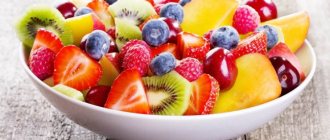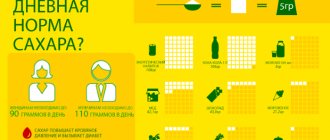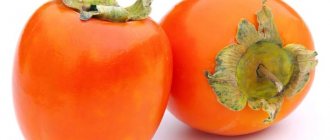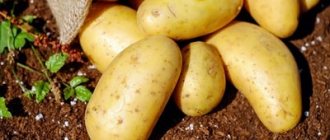How does sugar affect the body?
Carbohydrates are the main source of energy in the body and must be included in the diet. The effect of these organic substances on the human body is similar to the effect of fuel for a car: without them, a person is lethargic, he feels tired and hungry. Athletes need to consume large amounts of carbohydrates for endurance and recovery. Another question is that carbohydrates are different - simple and complex. The former are absorbed faster and release energy, and sugar belongs to this type of substance.
So, sugar is a product of organic origin, a simple (fast) type of carbohydrate. The simple components of sugar are monosaccharides - glucose, sucrose, fructose. Once in the body, the product is quickly broken down, releasing energy, and a person, having barely eaten the candy, immediately feels a surge of strength, vigor, and his mood improves. For athletes and people experiencing intense physical activity, sweets are an opportunity to quickly restore spent energy. It takes longer to break down complex carbohydrates that do not have a sweet taste (cereals, pasta, bread).
However, there is also another side to the coin. Sugar is a fast carbohydrate. The free energy obtained from eating sweets is consumed very quickly, its reserves dry up in 30-40 minutes. If during this time the energy reserves are not used, i.e. calories are not burned, they turn into fat, which settles in the most problematic areas.
Another dangerous point is a sharp jump in insulin when consuming excess sugar. Regular such “shocks” for the body can lead to the development of a serious disease – type 2 diabetes, which is in 4th place on the list of causes of death.
So, sugar is a healthy product and necessary for the smooth functioning of the body, but it is necessary to use it wisely. Sweets will not cause harm only if they are consumed in the right quantities and combined with active physical activity, including sports.
How to eat treats and not gain weight?
In order not to completely give up small joys, but also not to gain weight, you need to be able to eat desserts correctly. To do this, follow these recommendations:
- Always have breakfast. Let it be toast with cheese or scrambled eggs with bacon, the main thing is to eat 1-1.5 after sleep. Breakfast triggers metabolism, which is slow after sleep, which increases the body's absorption of nutrients and accelerates the breakdown of fat. With an accelerated metabolism, you can allow yourself a sweet diet a couple of times a day.
- Eat healthy sweets. Below we will give some examples of delicious sweet dishes that do not harm your figure.
- Eat sweets between 8 and 2 p.m. After lunch, a person's metabolism slows down, and the risk of eating treats increases into fat.
- Avoid store-bought sweets. It’s better to cook something delicious yourself, using homemade products. Purchased treats contain flavor enhancers, flavorings, and palm oil. All this increases appetite and has a harmful effect on the waist.
- Separate eating sweets and drinking tea. Tea, coffee and other drinks dilute the cloying taste of sweets. Because of this, a person will eat the entire bar instead of a third of a chocolate bar.
- Don't eat treats on an empty stomach. If you eat sweets to suppress your hunger, your blood sugar levels will rise sharply. This will be enough for 5-15 minutes, and then the craving for sweets will return with a vengeance.
Remember that the older you get, the slower your metabolism and the worse your food is digested. Even one piece of candy at night can lead to extra pounds. To prevent this, follow the above rules and increase physical activity. If you can't attend fitness classes, start running, swimming, or just walking more.
Is it possible to eat sweets before training?
Most people go in for sports in order to get rid of excess fat deposits. It would seem that under such conditions it is better to give up simple carbohydrates. However, during heavy physical activity - in bodybuilding, weightlifting, for example, as well as during long training - the body needs to quickly recover. In such a situation, simple carbohydrates perform the following functions:
- stimulate the production of insulin, which increases anabolic levels;
- quickly replenish expended energy;
- protect muscles from destruction;
- promote the production of the “hormone of happiness”;
- accelerate the burning of fatty acids.
You can eat sweets before training if you have to perform long exercises - 35-40 minutes of sports. In this case, an hour and a half before the start of training, you can consume simple carbohydrates in small quantities, about 15-20 g per serving - for example, enjoy one sweet apple, a spoonful of honey or a small piece of chocolate, or drink a glass of freshly squeezed juice. Some trainers recommend eating sweets immediately before training, citing the fact that then the calories will be completely consumed during exercise, but doctors do not agree with this approach: any food must have time to be absorbed in order for it to be beneficial.
The main thing is to count the calories of the foods you eat and know how much is consumed on average during the period of exercise. If the first indicator exceeds the calories burned, the amount of sweets before training should be reduced.
Homemade fermented baked milk sorbet with strawberries
Photo: Wine bar SimpleWine&Kitchen
Recipe by Semyon Nutels, chef at SimpleWine&Kitchen restaurant
- 1 l ryazhenka
- 8 egg yolks
- 120 g sugar
- 50 ml lemon juice
- 2 sheets of gelatin
- 5 g agar-agar
- Strawberries and strawberries for serving
Step 1. Mix the yolks with fermented baked milk and heat to a temperature of 78 degrees, stirring constantly.
Step 2. Add 2 sheets of gelatin, agar-agar stabilizer, sugar and lemon juice to the mixture.
Step 3. Stir until the sugar dissolves and the mixture becomes homogeneous.
Step 4. Pour the mixture into a container for freezing and put it in the freezer for 2-3 hours. Then beat the mixture with a blender.
Step 5. To serve, form ice cream balls with a special spoon, garnish with fresh strawberries and strawberry pieces.
Is it possible to eat sweets after training?
Approximately 35-40 minutes after strength training, a “carbohydrate window” opens in the body. At this time, the absorption of carbohydrates occurs twice as actively as during sports, and it is during this period that it is necessary to replenish the reserves of glycogen spent by the muscles - the main reserve carbohydrate that is stored in the muscles. With a sharp drop in blood glucose levels, the body begins to intensively consume muscle glycogen, which reduces muscle building exercises to zero. In addition, during training, stress hormones – cortisol and adrenaline – “work”, which increase activity and endurance. And after its completion, their action must be blocked - insulin will handle this.
So, after training, you can eat something sweet. Slow carbohydrates do not work here: by the time they are digested, the body will already draw on muscle glycogen. In addition, insulin helps the absorption of amino acids. After intense sports exercises, you can consume 30-60 g of carbohydrates without harm to the body. This could be a few juicy berries, dried apricots, a piece of chocolate or marshmallows. The main thing is without fanaticism!
Nutrition reviews up to 12 hours and results
Nutrition according to the proverb: “eat breakfast yourself, share lunch…” is good for the body and it turns out that it can be varied. Fasting dinners, based on light and healthy foods, are beneficial for the gastrointestinal tract, which should rest during sleep.
However, this diet is suitable for people who know how to control their appetite and the amount of food they eat in the first half of the day. Only in this case will the diet bring results and allow you to lose weight, eating freely, without experiencing emotional and physical discomfort. Therefore, the results are different for all women who test the effectiveness of this diet for themselves. Some people notice within a week that the waistband of their skirt or trousers has become looser, and the skirt can be twisted around the waist. For these individuals, this diet has become a permanent way of life. Some didn't notice any changes.
The point of view of having a hearty breakfast and eating lightly throughout the rest of the day also finds supporters among nutritionists. However, they clarify that this diet is suitable for those who do not exercise in the evenings, but sit at the computer or in front of the TV.
Reviews about the midday diet vary. Most choose it for constant nutrition, but dinner is not excluded from the regime, but is made light and low-calorie.
- “... We need to have the right attitude towards the phrase: “you can eat everything.” There is no point in eating unhealthy food from the start and as much as you like, even in the morning. You can let yourself relax and eat some fried potatoes or baked ones with mushrooms and cheese, but not cakes and pastries, fried meat, salads with mayonnaise. I was on this diet for a month. Lost 4 kg. The hardest thing is to resist dinner. For example, I couldn’t do it; dinner was always easy, but light. If my husband ate chop, I ate cottage cheese with fruit (dried fruits) or honey, kefir with bran. If I really wanted to eat, I would boil a piece of fish and eat it with a vegetable salad.”
- “... I adopted this diet, but adjusted it a little to suit myself - I eat everything I want until 15:00, and then only low-calorie dishes. Moreover, until 15.00 fast food could offer various sweets. I'm just drawn to eat unhealthy and fatty foods. You won't believe it, but I was losing weight. I lost 3 kg in a month. Maybe not as quickly and effectively, but I lost weight. On any diet with proper nutrition, where all this is excluded, I can’t stand it and break down. Therefore, this power system is suitable for me. I eat like this all the time now - breakfast and lunch, and skip dinner. I switched to this diet and feel normal and maintain weight. If you also add sports, you can still lose weight, but it’s not working yet. A friend of mine lost weight this way: she ate normally until 13:00, and then only coffee, water, 1% kefir and cottage cheese. In three months she lost 10 kg. With this system, what matters is what you eat in the afternoon.”
- “... I have a lot of experience losing weight using different programs, so I think that it doesn’t matter when you eat, it’s important what and in what quantity. If you overdo it with food for up to 12 hours (for example, 2000 or more), you will never lose weight. Or you can constantly eat protein foods in the afternoon and evening and lose weight wisely. I don’t see the point in overloading until 12, and then strictly eating vegetables. Some “before hour X” manage to eat half a kilogram of nuts or the same amount of sweets. Why can't you just count calories and distribute them evenly throughout the day? Why torture yourself and your stomach when you want to eat in the evening! I didn’t like the diet - I’m a supporter of proper nutrition with a full lunch, a snack after 2.5 hours and dinner. By eating right and doing fitness, I normally lose weight. Eating everything harmful until 12, and then limiting yourself very much is the way to see a gastroenterologist. At one time it was recommended not to eat after 6 p.m., then after 2 p.m., and now they have come up with the idea of not eating after 12 p.m.!”
Is it possible to eat sweets during training?
Yes, especially if the exercise requires intense cardio. For example, cyclists consume sweets throughout almost the entire distance, and yet there are no overweight people among them. To replenish glucose reserves, it is better to choose foods that contain, in addition to sugar, other beneficial substances and are not rich in fat.
Carbohydrates consumed during training are energy that will be used up here and now. The maximum sweet that the body can process during sports activities is 50-60 grams. If you eat protein in addition to carbohydrates, 30 grams of sweets will be enough. This could be a sweetened sports drink, berries, a carbohydrate bar, or yogurt.
Strawberry panna cotta with vegetable milk
Photo: JOY Restaurant
Recipe by Svetlana Makarenko and Anton Patankin, pastry chef and chef of the JOY restaurant (Rostov-on-Don)
- 100 ml coconut milk
- 150 ml soy milk
- 2 g vanillin
- 5 g gelatin
- 100 g sugar
- 150 g strawberry puree
Step 1. Make the sauce: combine strawberry puree and half the sugar and bring to a boil, simmer for 2-3 minutes.
Step 2. Mix soy and coconut milk, remaining sugar and vanilla, bring to a boil.
Step 3. Add gelatin and beat with a blender.
Step 4. Pour into glasses. Place in the refrigerator until hardened.
Step 5. Pour strawberry sauce over the frozen panna cotta and decorate with berries and mint.
TOP 10 sweets for athletes
The body needs carbohydrates after intense physical activity - this is undeniable. However, when deciding which sweet to prefer to restore balance, you need to rely, first of all, on the usefulness and composition of the product. If the treat does not contain anything other than sugar - for example, lollipops, chocolates - it is better to refuse them. Do not pay attention to sweets that are rich in fat - cakes, pastries, creams, ice cream, cream-based desserts.
What simple carbohydrates are most beneficial for the body? We present to you the TOP 10 sweets that athletes can and should eat.
- Honey.
A storehouse of vitamins, amino acids, minerals. The calorie content is equal to sugar, and the benefits are immeasurably greater. Flavonoids and essential oils help strengthen the immune system, improve digestion, and speed up metabolism. - Fresh fruits and berries.
In their raw form, these products are leaders in the content of nutrients. Apples are especially useful as a source of fiber; pomegranate and cherry, which increase hemoglobin; Apricots and persimmons are sources of dietary fiber that promote smooth intestinal function. - Dried fruits.
An excellent remedy for strengthening the heart muscle. Prunes, dried apricots, dates are the healthiest “carbohydrate” snack. However, the calorie content of these products is higher than that of fresh fruits due to the lack of water. As a result, the calorie content is higher than in ordinary fruits. Therefore, you should not abuse these products despite all their positive properties! - Paste.
This product should not be white and airy, but dark and viscous. The latter contains more dietary fiber, which promotes good digestion and a longer feeling of fullness. The unique property of marshmallow is to neutralize the effects of heavy metals on the body. - Black chocolate.
A source of polyunsaturated fatty acids, including linoleic acid, a healthy Omega-3 acid. The product regulates blood pressure, strengthens blood vessels, increases performance and improves mood, promoting the production of “happiness hormones”. The recommended dose is no more than ¼ tile per day. - Candied fruit.
They replenish the body with ascorbic acid, beta-carotene, tocopherol - antioxidants necessary for the normal functioning of the body. Relieve fatigue and restore performance without storing extra calories. - Marshmallow.
One of the most popular products among people trying to lose weight and not having the strength to give up sweets. And this is not without reason: marshmallows contain few calories, but are a source of iron, phosphorus and protein - athletes are delighted! - Halva.
The number of calories in the product is high, but the content of vitamins A, B, E, proteins, and the rejuvenating effect of halva on the body is the reason why it should be preferred to other sweet foods. - Jam.
The beneficial properties of the product are especially evident when it is boiled for no more than 5 minutes with a minimum amount of sugar. The healthiest jams for athletes are nut, raspberry and dogwood. - Marmalade.
Pectin, which gives the sweetness a gelled form, lowers cholesterol levels and prevents joint destruction.
Let's summarize. There are no sweets that are particularly “harmful” for humans, and the body’s need for fast carbohydrates is just as high as for slow ones. You just need to choose the right sweets and eat them in reasonable quantities. To do this, you need to know your daily calorie needs. Give preference to healthy sweets, only occasionally indulging yourself with your favorite delicacy.
Sweets for children: what, when and how much
Children are the main sweet tooth. At the same time, parents are responsible for their diet, worry about proper development and nutrition and limit their child in desserts. Often unfounded. In order not to harm your health and your developing immune system, you should, if possible, avoid sweets with bright colors and pungent flavors. Instead, offer your child a piece of cake or a small cupcake. Let it be one or two a day; a small portion will be more than compensated for by the interesting decor of sweets with your child’s favorite cartoon characters.
Cupcakes “Garfield and src=”https://xn--80ajchmregk.xn--p1ai/blog/wp-content/uploads/2016/08/006f-shhenyachiy-patrul-385×385.jpg” class=”aligncenter” width=”385″ height=”385″[/img]Paw Patrol cupcakes
Cupcakes "Makvin-2"
When talking about the amount of sweets for a child, take into account his lifestyle. Desserts are an accessible source of energy and easily digestible carbohydrates. If your baby is active and cheerful, you should not deny him a dose of sweet endorphins. Do not deprive him of the joy of a delicious cake, trying to protect him from being overweight. The allowable limit for sweet confectionery products for children from 3 to 18 years old is up to 0.5 kg per day.











